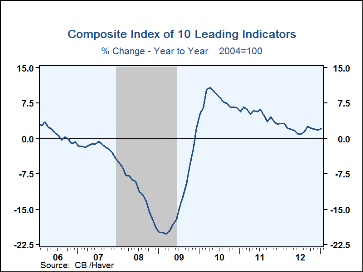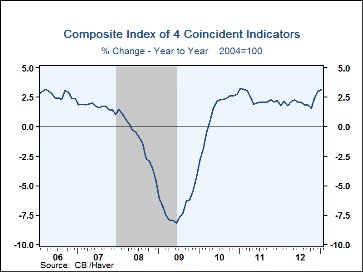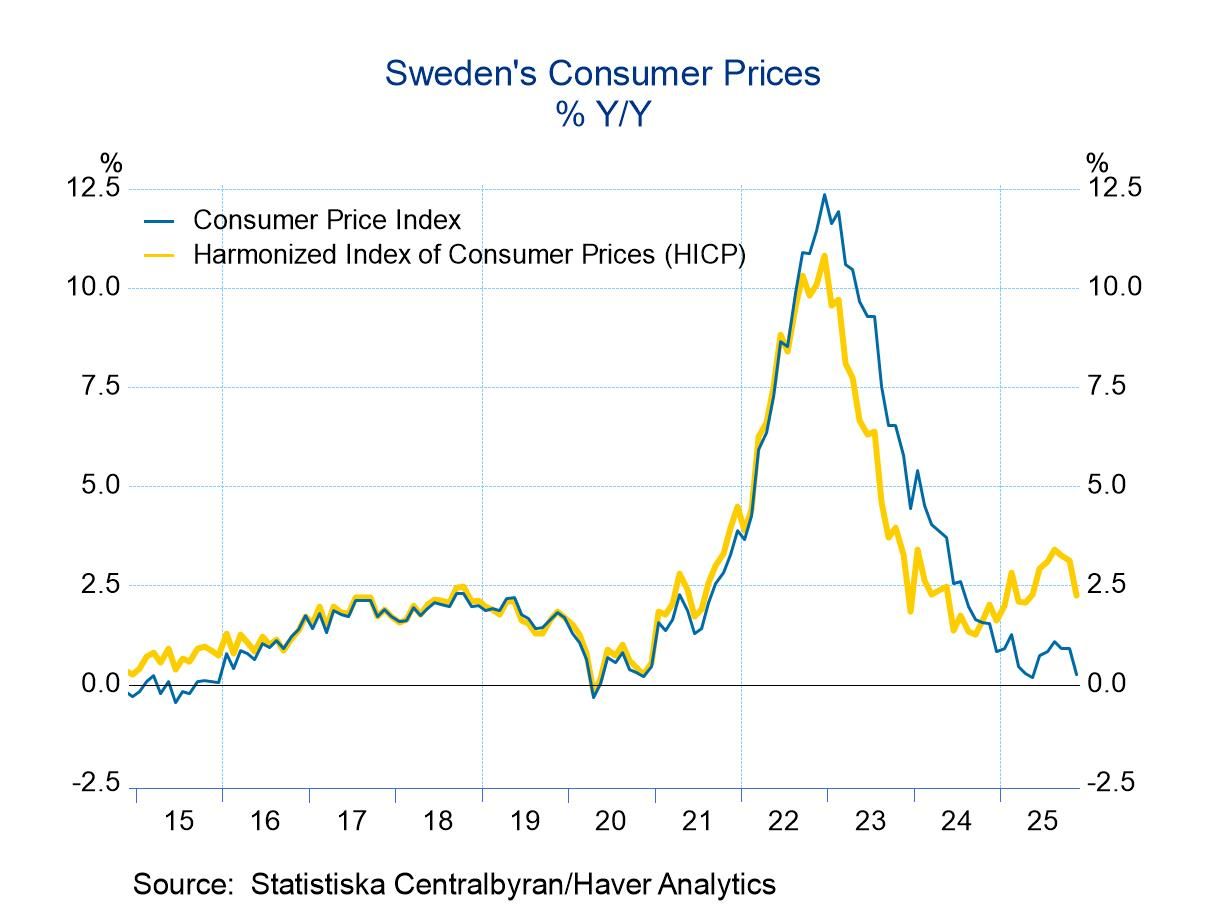 Global| Feb 22 2013
Global| Feb 22 2013U.S. Leading Economic Indicators Rise Again
by:Tom Moeller
|in:Economy in Brief
Summary
The index of Leading Economic indicators, published by the Conference Board, increased 0.2% (2.1% y/y) during January following an unrevised 0.5% December increase. Sixty percent of the component series had a positive influence on the [...]
The index of Leading Economic indicators, published by the Conference Board, increased 0.2% (2.1% y/y) during January following an unrevised 0.5% December increase. Sixty percent of the component series had a positive influence on the index. A steeper interest rate yield curve, higher stock prices and the leading credit index were the primary drivers of last month's gain. These were offset by lower consumer expectations for business & economic conditions and a shorter average workweek..
The index of coincident indicators increased 0.4% (3.1% y/y) in January after an upwardly revised 1.0% December increase. For all of last year, the average gain in the coincident was revised slightly higher to 2.1%. Real personal income less transfers had the largest positive influence on the index last month, followed by higher payroll employment and business sales. Industrial production slipped marginally.
These gains continued against the backdrop of rising economic excess. The index of lagging economic indicators rose 0.4% last month and the y/y gain of a firm 3.5% roughly matched last year's full-year rise. A reduced 43% of the component series increased last month. A much longer average duration of unemployment and higher commercial & industrial loans outstanding had the largest positive effects on the index last month.
Another leading economic series is the ratio of coincident-to-lagging indicators. It measures how the economy is performing versus its excesses. The figure was unchanged after sharp gains during the prior two months.
The Conference Board figures are available in Haver's BCI database; the components are available there, and most are also in USECON. The forecast figure for the Consensus are in the AS1REPNA database. Visit the Conference Board's site for coverage of leading indicator series from around the world.
Discussion of "Crunch Time: Fiscal Crises and the Role of Monetary Policy" is the title of today's speech by Fed Governor Jerome H. Powell and it can be found here here.
| Business Cycle Indicators (%) | Jan | Dec | Nov | Y/Y | 2012 | 2011 | 2010 |
|---|---|---|---|---|---|---|---|
| Leading | 0.2 | 0.5 | 0.0 | 2.1 | 2.0 | 5.1 | 8.0 |
| Coincident | 0.4 | 1.0 | 0.9 | 3.1 | 2.1 | 2.4 | 1.2 |
| Lagging | 0.4 | 0.1 | -0.2 | 3.5 | 3.7 | 2.7 | -3.1 |
Tom Moeller
AuthorMore in Author Profile »Prior to joining Haver Analytics in 2000, Mr. Moeller worked as the Economist at Chancellor Capital Management from 1985 to 1999. There, he developed comprehensive economic forecasts and interpreted economic data for equity and fixed income portfolio managers. Also at Chancellor, Mr. Moeller worked as an equity analyst and was responsible for researching and rating companies in the economically sensitive automobile and housing industries for investment in Chancellor’s equity portfolio. Prior to joining Chancellor, Mr. Moeller was an Economist at Citibank from 1979 to 1984. He also analyzed pricing behavior in the metals industry for the Council on Wage and Price Stability in Washington, D.C. In 1999, Mr. Moeller received the award for most accurate forecast from the Forecasters' Club of New York. From 1990 to 1992 he was President of the New York Association for Business Economists. Mr. Moeller earned an M.B.A. in Finance from Fordham University, where he graduated in 1987. He holds a Bachelor of Arts in Economics from George Washington University.










